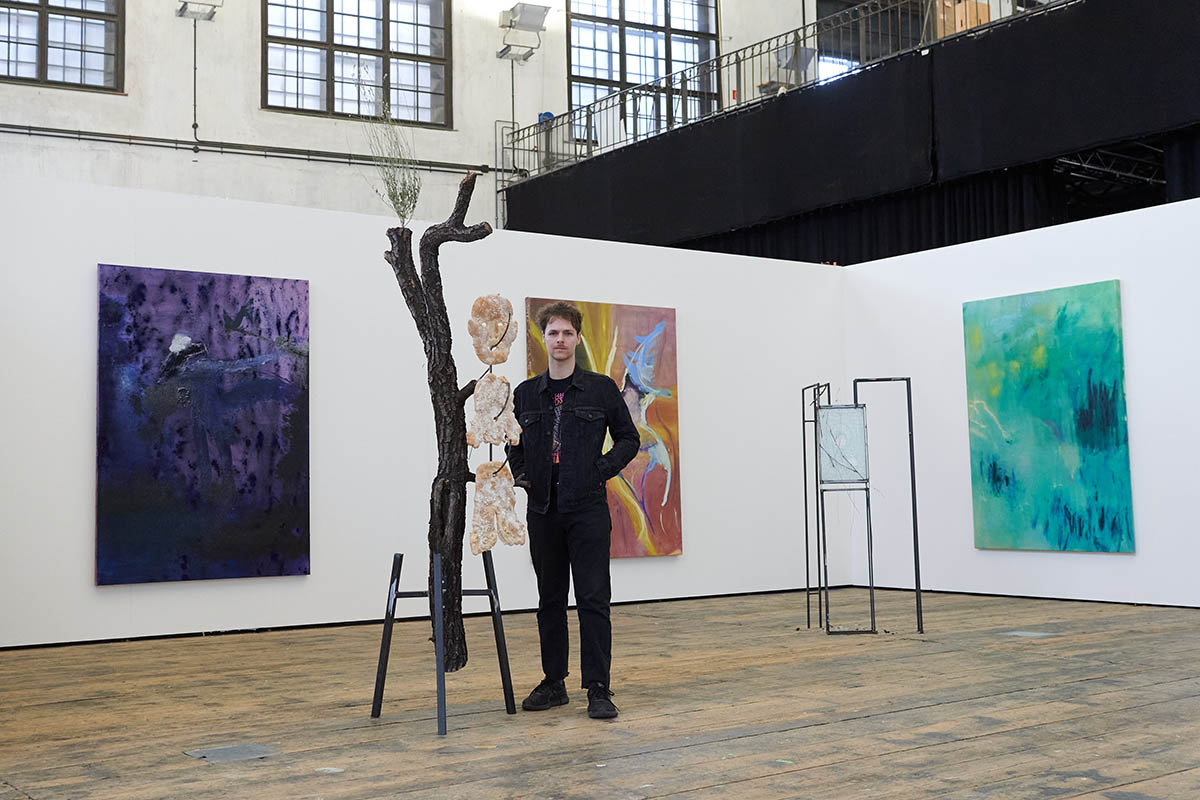
In October 2023, he graduated from his studies in the class of Daniel Richter, Expanded Pictorial Space, at the Academy of Fine Arts in Vienna, following earlier mural painting studies in Barcelona, Spain, in 2016.
Can you tell us first what you enjoyed doing in your childhood? What are the experiences that brought you to music and visual art?
Video Games. Nintendo 64, Buck Bumble, Super Mario, weird little games—I remember I was listening to the score in the games, and I knew all the melodies. I also played it on the guitar. I was very influenced by my cousins when it came to games and music. My older cousin was showing us everything; he was a music nerd, and he introduced us to indie rock from the UK and USA. We were in the countryside, so this was huge. I started very early music education when I was four and learned first about rhythm and playing the flute. When I was eight, I started playing classical guitar; electronic guitar came when I was fourteen. I enjoyed listening to Kings of Lions, The Cooks, Killers, Interpol, and The National. Later, when I picked up the drawing habit in school, I was inside the educational system, which was very conservative; for me, this was not working. I was always in the back of the class with a few other friends, and I was drawing every day in my school notebook—manga, cartoons, and anime. At first, it was a good practice for passing time in school.
How did it happen that you decided to move from Austria and start living in Spain?
After the social service I did in Austria, I wanted to leave, at least for a couple of months. I wanted to get an idea of how it is somewhere else. My friend was with me in it. I first had an idea to go to Stockholm because I was back then very engaged in the music scene there—post-jazz and the new jazz scene—in Oslo and Stockholm. But my friend had an idea to go somewhere warmer and closer, and because of his knowledge of Spanish, we went to Barcelona. Let’s go! I was so unprepared, that we just went; somehow I ended up living there for the next seven years.
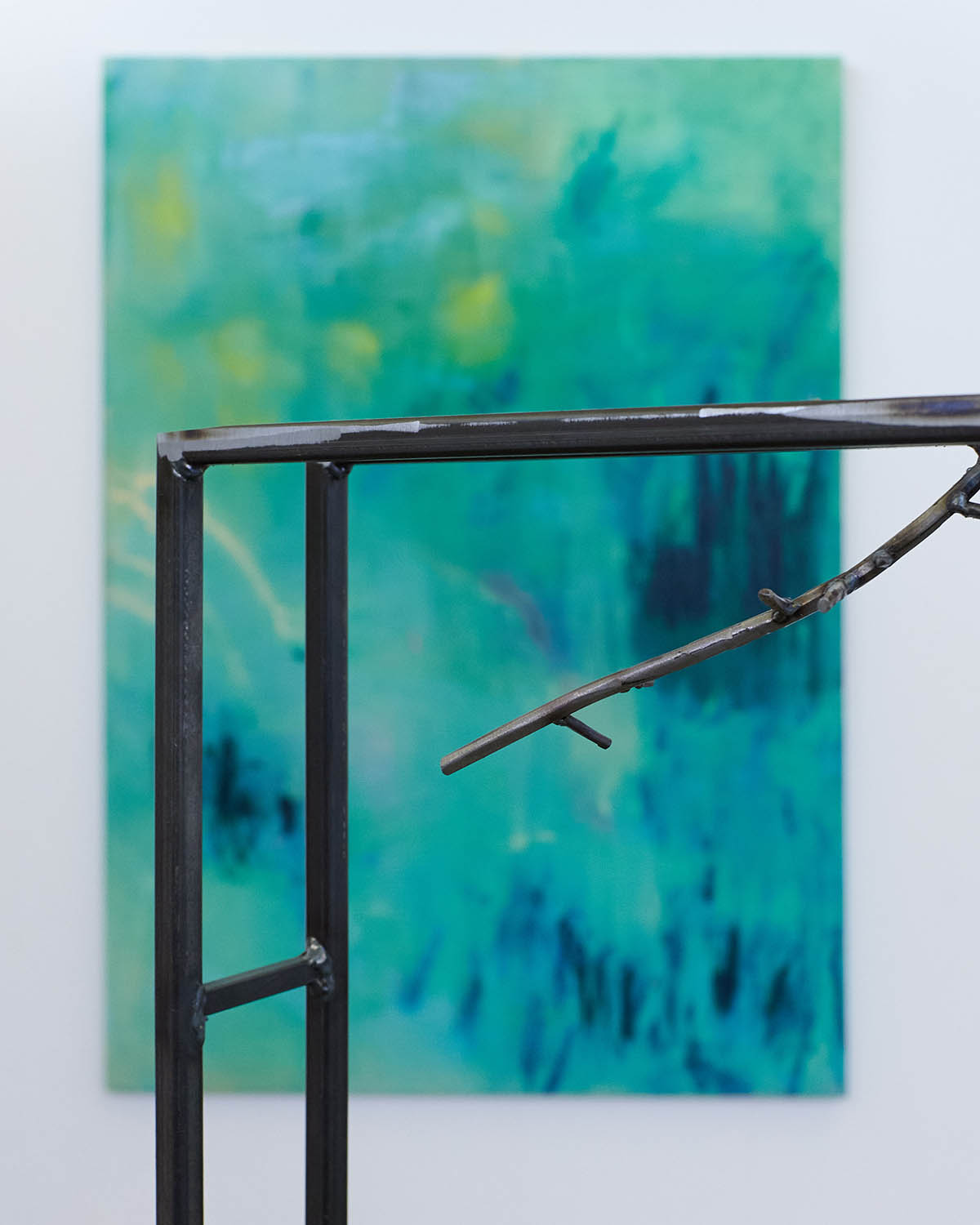
Jakob Kolb „Strange Days“, Academy of Fine Arts Vienna, October 2023 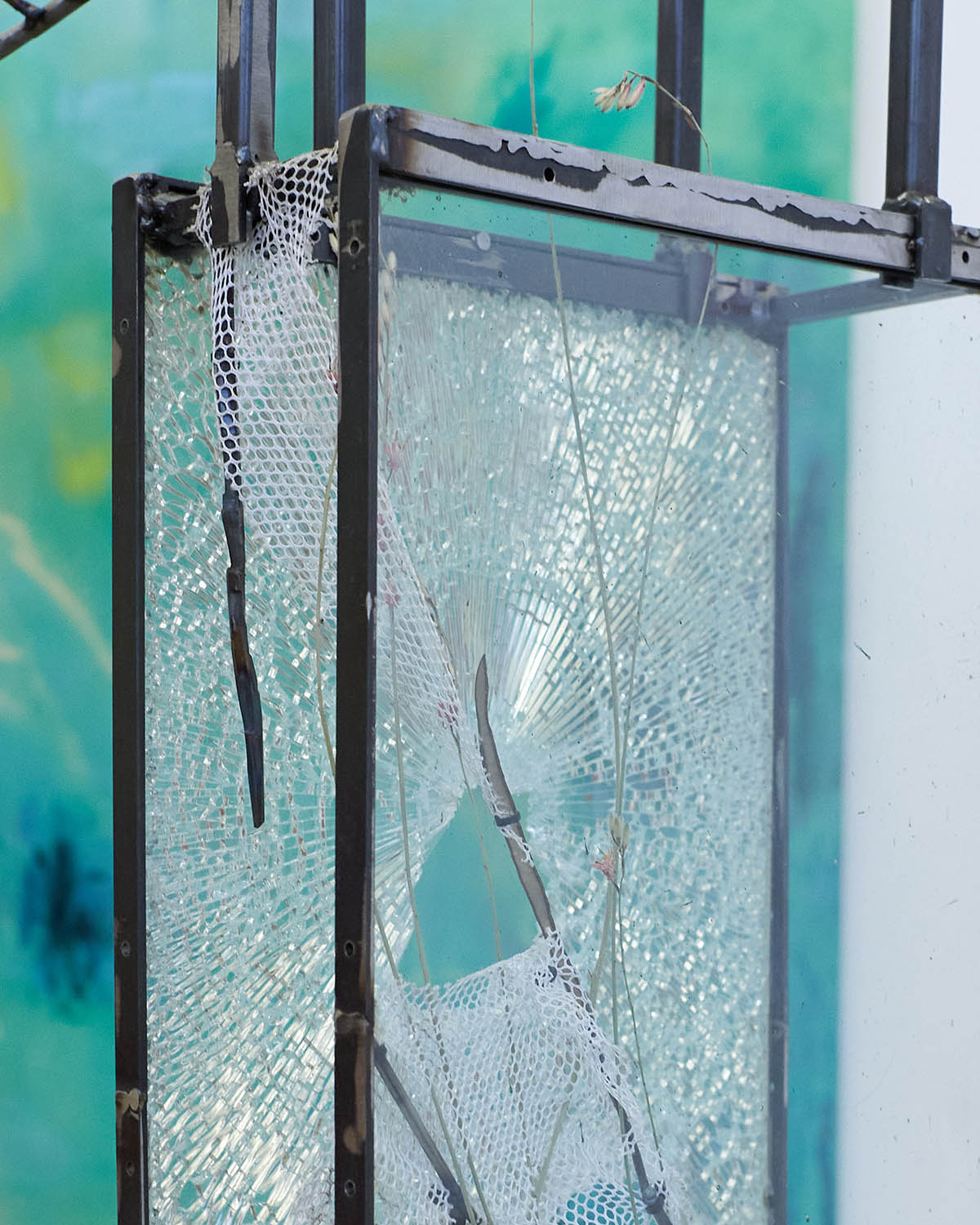
Jakob Kolb „Strange Days“, Academy of Fine Arts Vienna, October 2023
How was your love for video games applied in your early time in Spain? How did it come that you studied painting and not some other visual art studies?
Your time there was filled with studying, but you were also a part of a collective and played music. There in Barcelona, I had a job in a call center with German-speaking support, working for Star Wars: The Old Republic. We had to play the game for four hours of our shift in order to understand and be able to help the customers solve the problems in the game. At that moment, I had a couple of friends who were studying animation and illustration, so I decided to try to study illustration at first. Studies were very client-oriented, and during my first year, I saw people from painting class in their studio, and I thought, I want to do this; I want to study painting. I did my diploma in painting there, and my final exhibition was a digital VR experience where I scanned in my sculptures and my paintings. As for my diploma here, the environmental aspect of it was important. During my studies in Barcelona, I was part of an off-space Cera 13 with my friends; we were there working every day in the studio, and we were a collective and had a band. Space closed because of the problems with the building we were in. It was a time of economic crisis in Spain, and I had the opportunity to work in a sushi restaurant there or to come back to Austria and continue studying, so I made a decision and moved to Vienna.
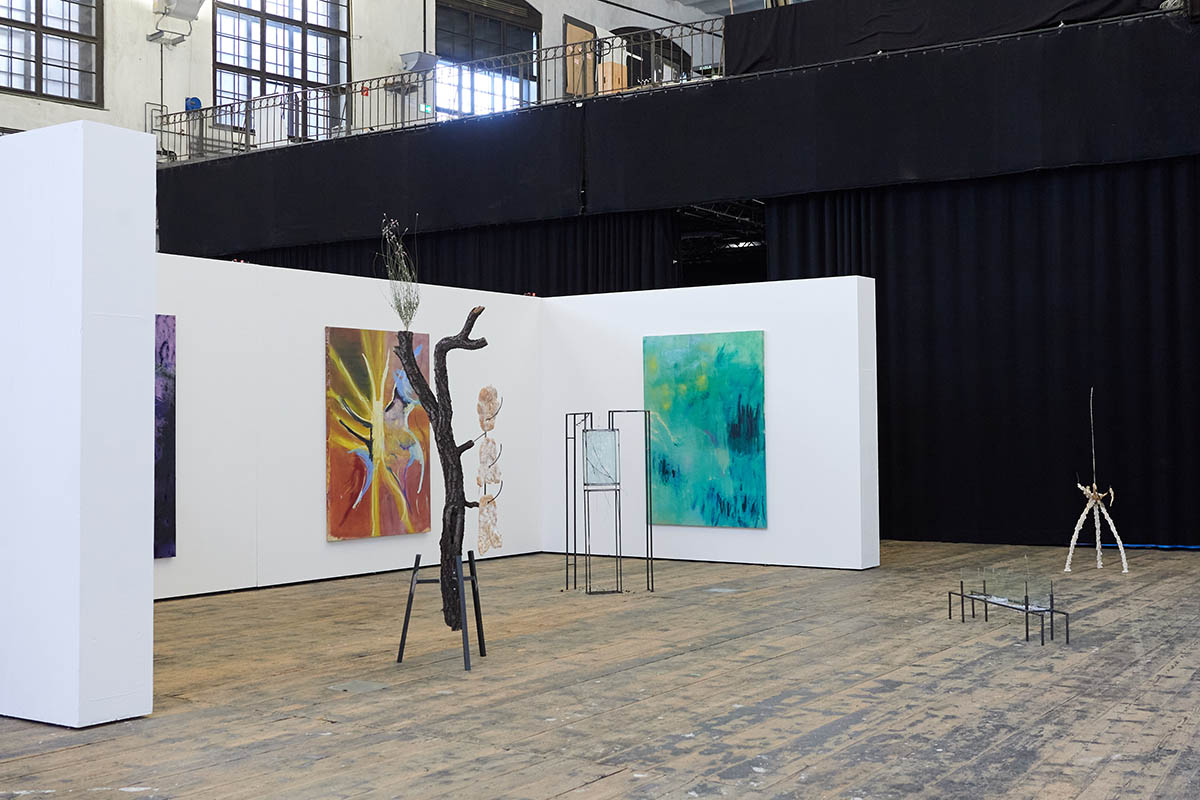
Does „On Bells“ ring any bells? How did your career as a guitarist in bands develop into a solo career? And how did the name „On Bells“ happen?
I was always engaged, like the guitar player in many bands, before I started doing solo things. I was continuously writing music and lyrics for bands, but I also had a huge collection of stuff I envisioned recording solo. My first performance as On Bells and solo performance was on my first Rungang here in the academy. I had a 20-minute gig, and suddenly it felt really good to do it. The exchange of energies with people felt amazing. The name On Bells came from my time in Spain during the period of living alone and the discovery of bell sounds that I found on the internet. While I was listening to these sounds, I felt high. I felt like I was riding high on bell sounds. I also like the sound of the word bells.
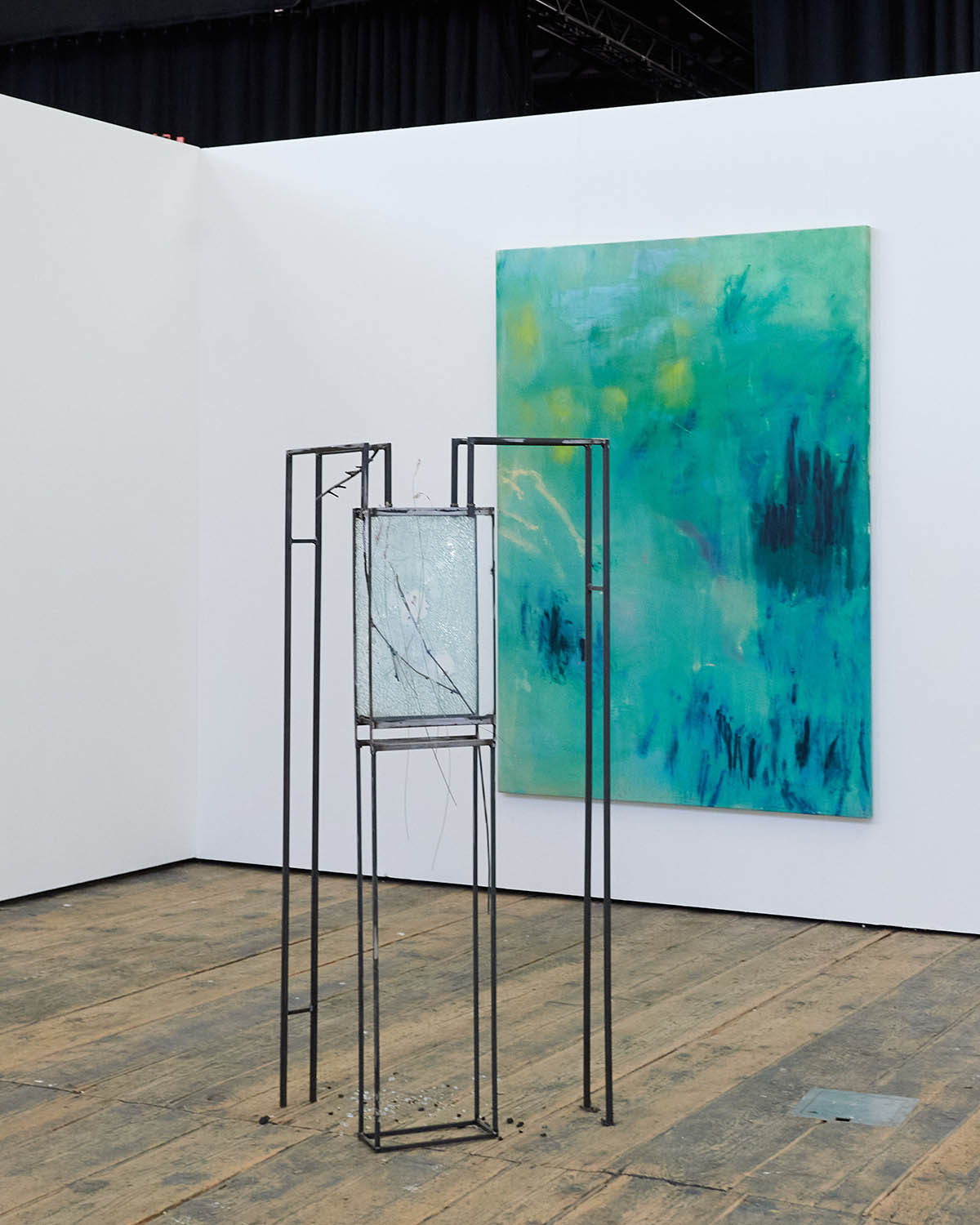
Do your music and the poetic nature of your visual work intertwine, especially when you’re crafting lyrics, getting into emotions, and exploring autobiographical themes? How does the physical process of creating sculptures or paintings relate to making music and performing on stage?
People have asked me many times how I can define my position in the arts, like, are you a painter or do you do music? It was a struggle. I felt I needed to figure it out. With more experience, I knew that my brain works this way. And the music is, for me, the same as the visual arts. The background is the same; it is emotion. For me, my first album is Drip by On Bells, a musical one, and my second album is Strange Days by Jakob Kolb, a visual album. Every position in the show is a song, and I did seven of them.
Tears for Fears: Head Over Heels is the trigger point for the exhibition in 2018. Now Strange Days by Kathryn Bigelow for your diploma exhibition?
It is about every aspect of the particular reference you are using to express your concept. The titles of your works are always important. How much writing practice is part of your work in the studio? I love poetry. I was invested in lyrics a lot when I was younger. I read a lot of them and felt very close to the poems. And yes, I used the Bowie method of experimenting. With Head Over Heels, I referenced the music thing, and now I am referencing a movie that stuck with me. But strange days are also this transition of not being a student anymore. I am drawn to poetic writing, and I like text a lot. But I also feel that it is the hardest thing to do. I can do music so fast, but the lyrics are more complicated. That’s why I am so proud of them.
FROM THE OTHER SIDE
Like sand sifting through an hourglass, so music falls into music.
I am sad on this night made of wolf fangs.
Music falls into music the way my voice falls into my voices.
From the book: Alejandra Pizarnik, Extracting the stone of madness
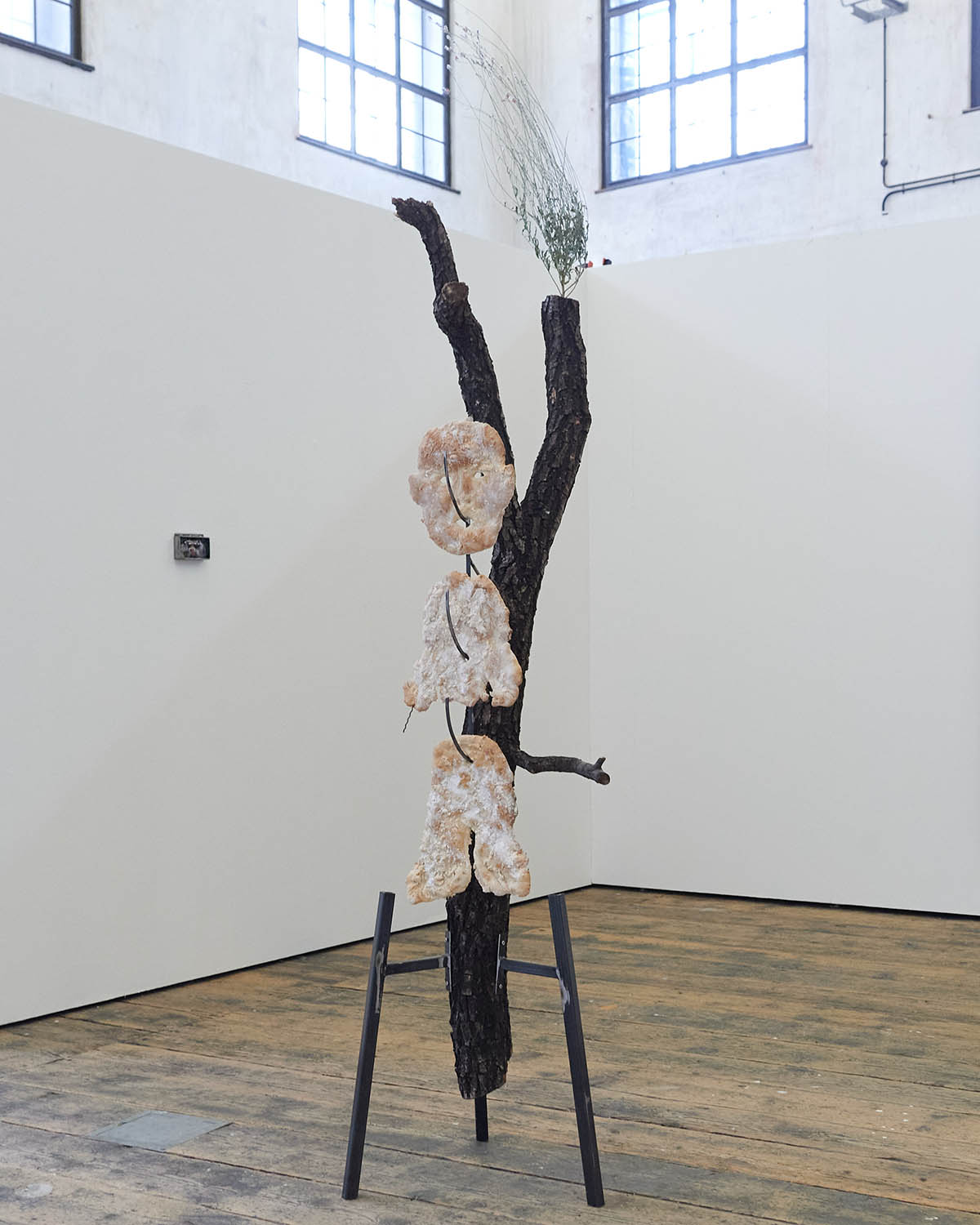
Jakob Kolb „Strange Days“, Academy of Fine Arts Vienna, October 2023 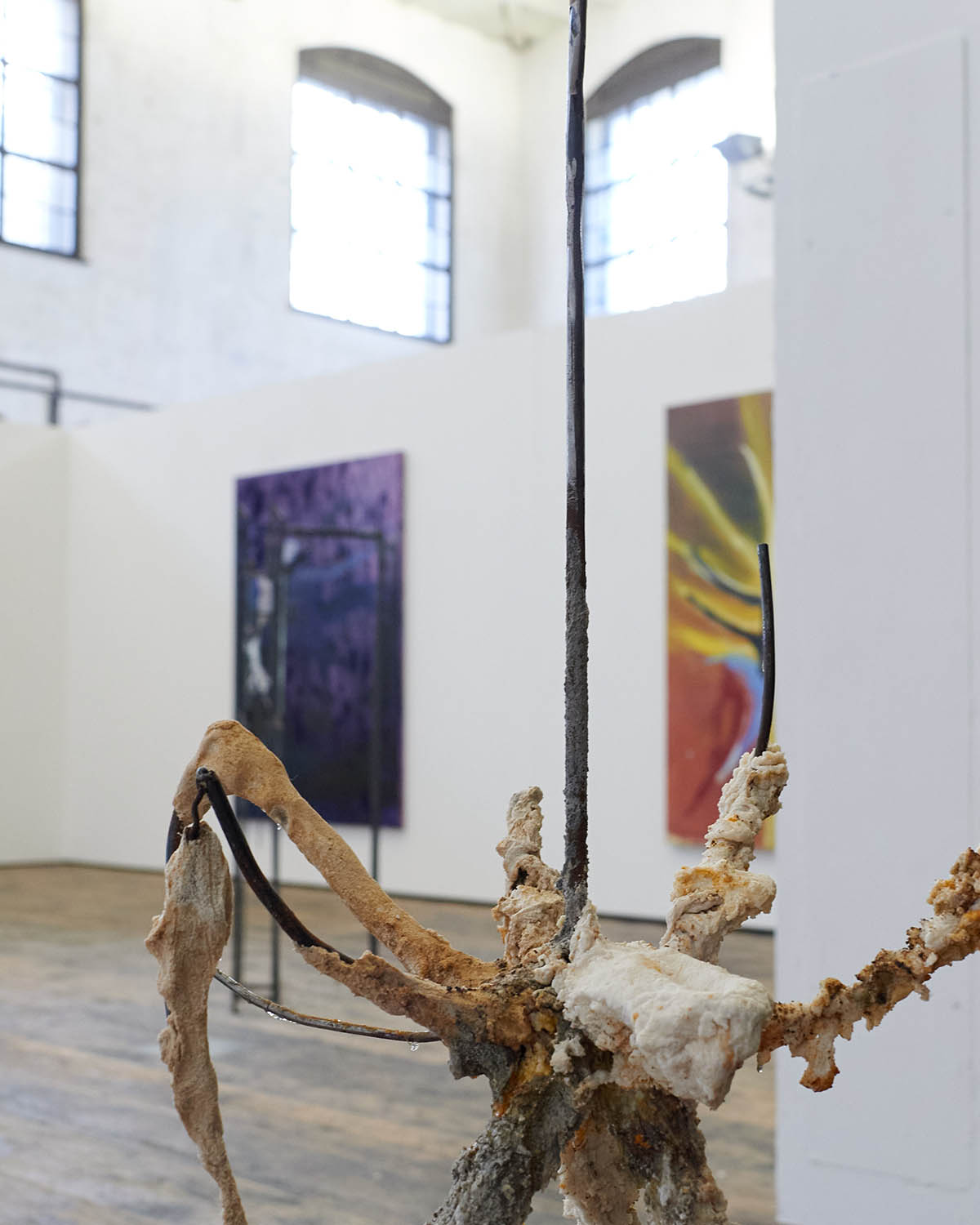
Jakob Kolb „Strange Days“, Academy of Fine Arts Vienna, October 2023
Your relationship with materials is unique, and the methods you are using not only in making music but also during painting and building are very analytical. Tell us more about it.
The qualities of the materials have always interested me, and I love to play around with them. I am trying to narrate something; there is a sense of urgency that I want to narrate a story, and I can use different materials to help me do it. And I feel that the qualities of the ephemeral materials like cut flowers or salt dough, encourage me to play with them and to use them to express my story. It becomes a quality. The person can be shy or confident, the same way the materials are functioning for me. Like this, I can place, for example, a sense of time in the show; it can become a performative element. In this show, I made it the way that it is conserved and phosilized, so I am sure it will last very long. And in music, I feel this recording part has this eternal quality, the same way as steel and glass when it comes to the materials. I love live shows because they are always ephemeral.
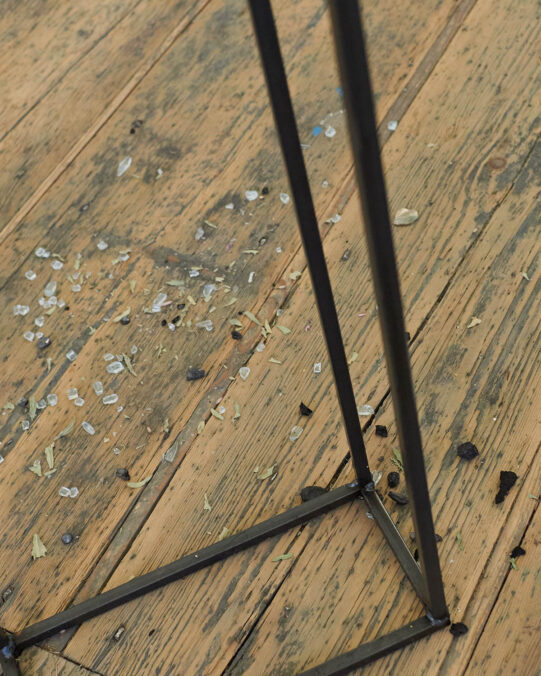
Jakob Kolb „Strange Days“, Academy of Fine Arts Vienna, October 2023 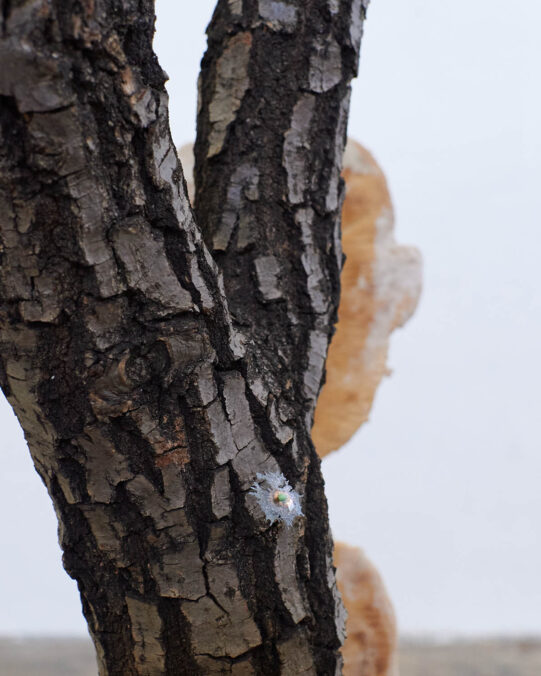
Jakob Kolb „Strange Days“, Academy of Fine Arts Vienna, October 2023 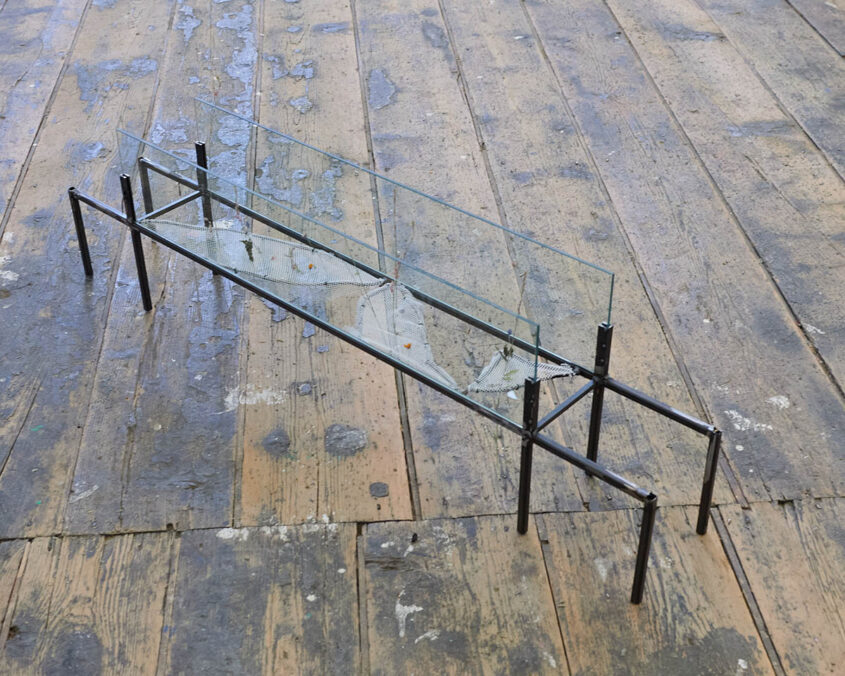
Jakob Kolb „Strange Days“, Academy of Fine Arts Vienna, October 2023
Did you ever have idols or idolizations when it comes to the visual artist?
I can name-drop some artists or big names like Rothko or Tracey Emin, but it doesn’t really matter or is not so important for me. Because I feel more connected to the methods artists use and not the final works. It is definitely a romantic, melancholic emotional state that I am searching for in myself.
Tell us about your diploma show, Strange Days.
Butterfly started appearing in my drawings, at first not so clear but becoming clearer and clearer. As it reappeared in drawings, I started investigating. Of course, this transformative notion and the stages of life that a butterfly goes through are a huge part of my process. It reminds me of Pokémon with three levels; I connected it with three paintings in the show, DAY. BUTTERFLY AND NIGHT is almost like a circle.
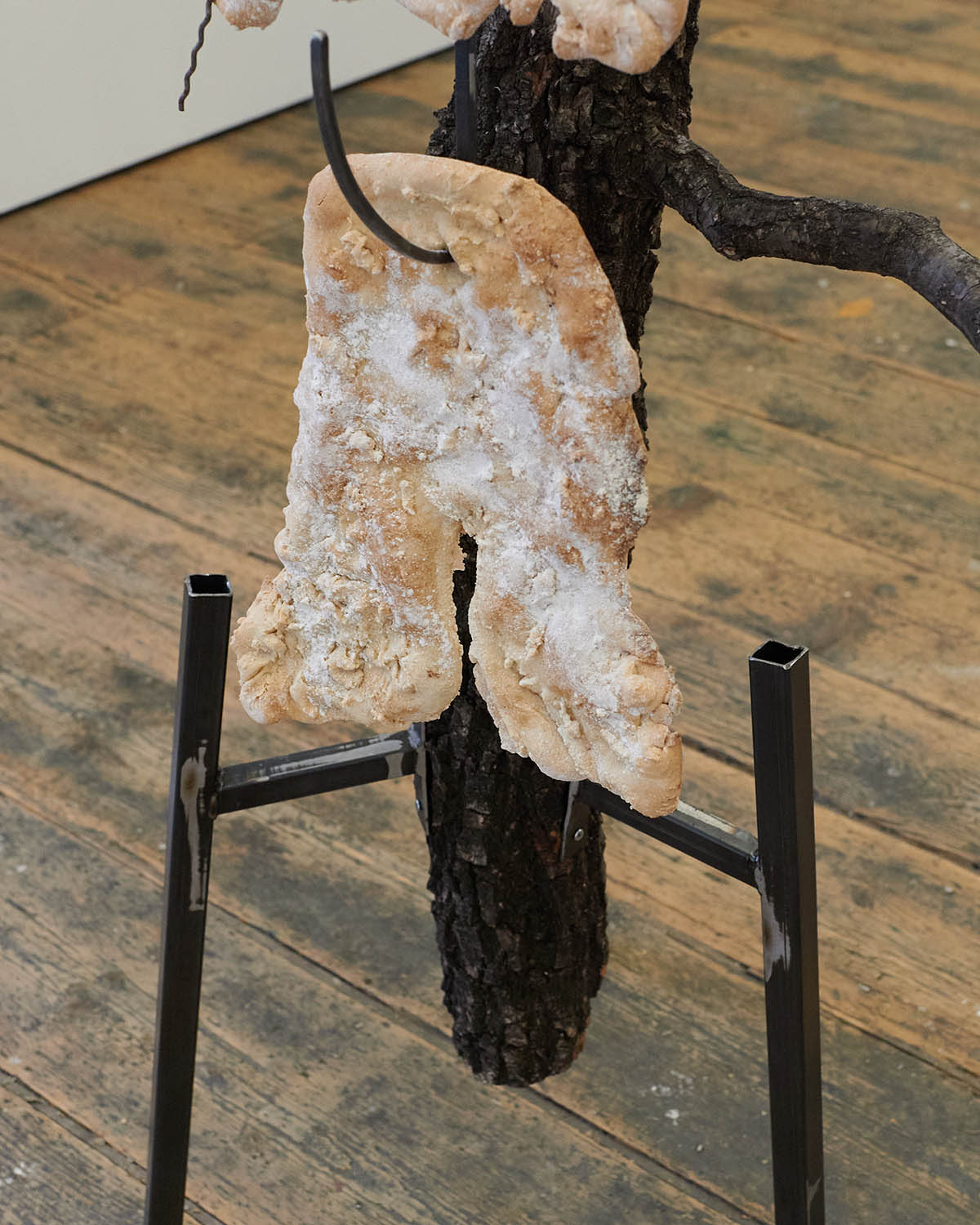
Spider is here as well. For me, the sculpture of the spider looks like a self-portrait; could it resemble you? I see it as a keeper of the other works in the show. The show is full of protagonists and characters and has many levels of poetic thinking and materials.
Documentation I did for the show: I posed next to my works in a Spider-Man costume. I think that says a lot about what you recognized. I have felt super connected to a „spider theme“ for a couple of months.
You are not afraid of spiders?
No!
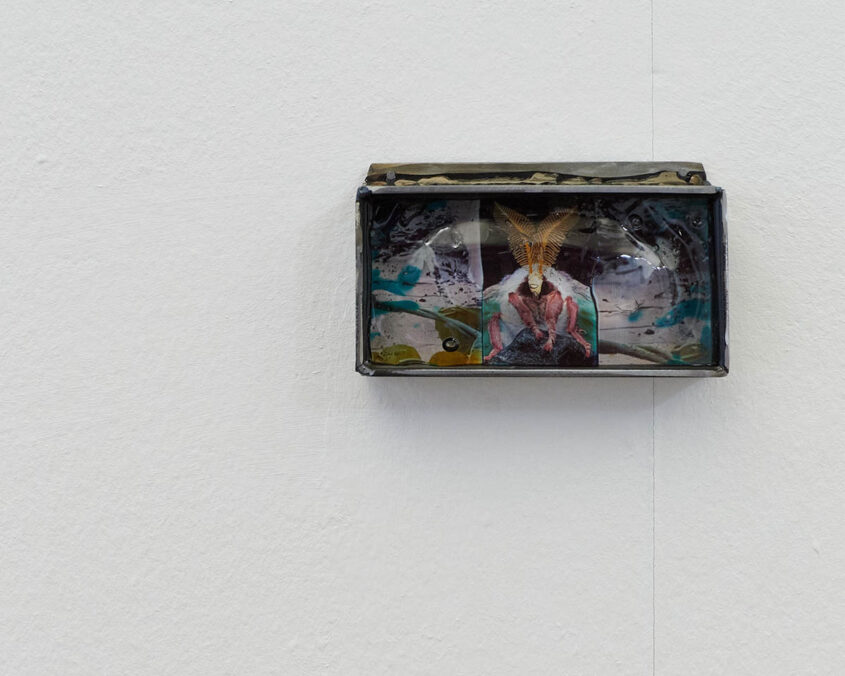
Where and how did you spend your summer in 2023?
This summer, I spent 2 months in Spain doing the residency for the performance project called KRA at Residency Boca de Fosc. I was doing the sound for the project of my partner Nora.
Where can we see you or listen to you next?
The next On Bells concert is on the 30th of October at Rhiz, Vienna, with Sean Nicolas Savage and Futura. And everybody is invited.
Jakob Kolb – www.jakobkolb.com, www.instagram.com/on_bells/





